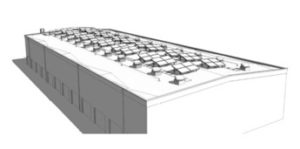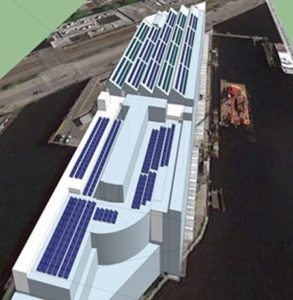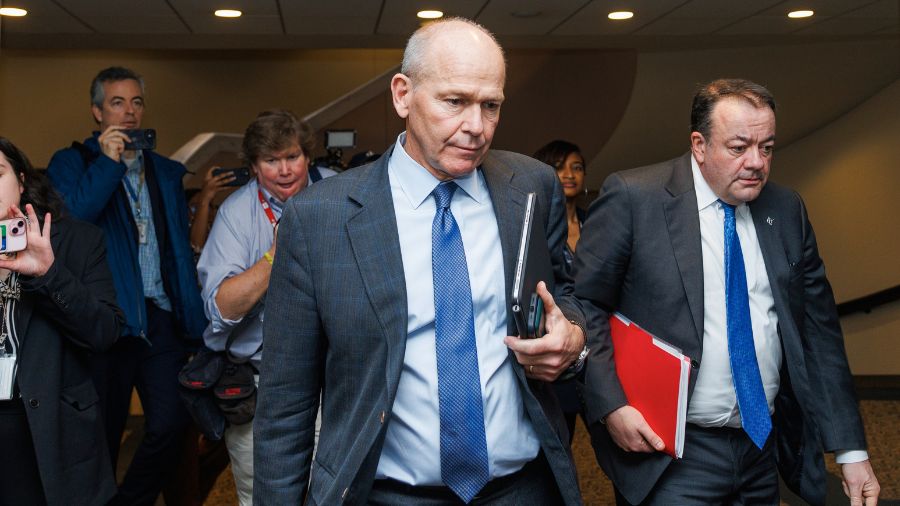Seattle port ‘charts new course’ with solar power
Oct 30, 2017, 12:31 PM | Updated: Oct 31, 2017, 7:38 am
The Port of Seattle is taking its first step toward going solar as it “charts a new course” to tackle climate change.
“We are very proud that this month we are finally going to have our first solar array at Fishermen’s Terminal,” said Port of Seattle Commissioner Fred Felleman.
“The port has taken environmental stewardship seriously over the years, but this is doubling down on a commitment that I’m proud to say the entire commission is unanimously supportive of,” he said.
RELATED: Climate change likely to cause migration to Northwest
The double down comes in the form of a solar array that A&R Solar is installing on the roof of Net Shed 5 at Fishermen’s Terminal.
“Starting off small, like at Fishermen’s Terminal, gives us the opportunity to go through the entire evaluation of maintenance and experiencing what it’s like for us to incorporate solar into our operations,” Felleman said.
The array will be a small pilot. It won’t benefit from the economy of scale that larger solar arrays have, but will pump power into the building. Any excess energy will go into the grid at the terminal. With the experience at Net Shed 5, the port aims to expand solar to its larger facilities, starting with Pier 69.
Solar Seattle port
In 2016, the port began considering a handful of its properties to place solar panels. A University of Washington analysis researched a few locations, such as Fishermen’s Terminal, Pier 69 where the port’s headquarters is, and vacant land near Pier 2, Terminal 5. That land would have been the largest solar array the port could create, but since there was nothing on it, the port would have to build it from scratch.
Port buildings, however, already have roofs and wiring. Fishermen’s terminal offered a timely opportunity — it was due to for a new roof anyway. The array at Fishermen’s Terminal will produce 11,000 kWh each year for the building. It is expected to offset .165 metric tons of CO2 annually.
The solar array budgeted for the port’s headquarters at Pier 69 will be much larger. The port received a $300,000 grant from the Washington State Department of Commerce to partially pay for the installation in 2018. The array is expected to produce 320,000 kWh each year, cutting down on 11,000 pounds of CO2.
The solar projects start as the port commission passed an Energy and Sustainability motion that “charts a new course toward the port’s commitments to reduced greenhouse gas emissions, enhance sustainability and assess new opportunities,” according to the port.
“We are trying to come up with a screening mechanism in which we can evaluate the various … economic and societal benefits associated with various alternative energies,” Felleman said.
“(The solar array) serves the initial purpose of making a contribution towards our greenhouse gas reduction goals, but for a bigger and longer-term benefit, it allows us to evaluate how we can determine if solar is appropriate for future installations, or whether there may be other mechanisms like biogas, and we are also looking at aviation jet fuel alternatives,” he said. “Which is the best bang for the buck?”
Another potential move the port could make, Felleman said, is partnering with Eastern Washington ports that have vacant properties. The Port of Seattle could invest in solar arrays on that land.
“It’s for everybody,” Felleman said. “It’s even big government operations. Big industrial operations. It’s mainstream. We have to acknowledge the fact that it’s everybody’s responsibility to do their part to reduce the impacts of climate change. We’ve had fires like never before. We’ve had storms that have been unprecedented. In our back yard, our shell fish have trouble forming their shells due to ocean acidification.”
“This sends a clear message that we are acting on the public’s behalf for the long-term good, and actually generating some economic stimulus for the future,” he said.















